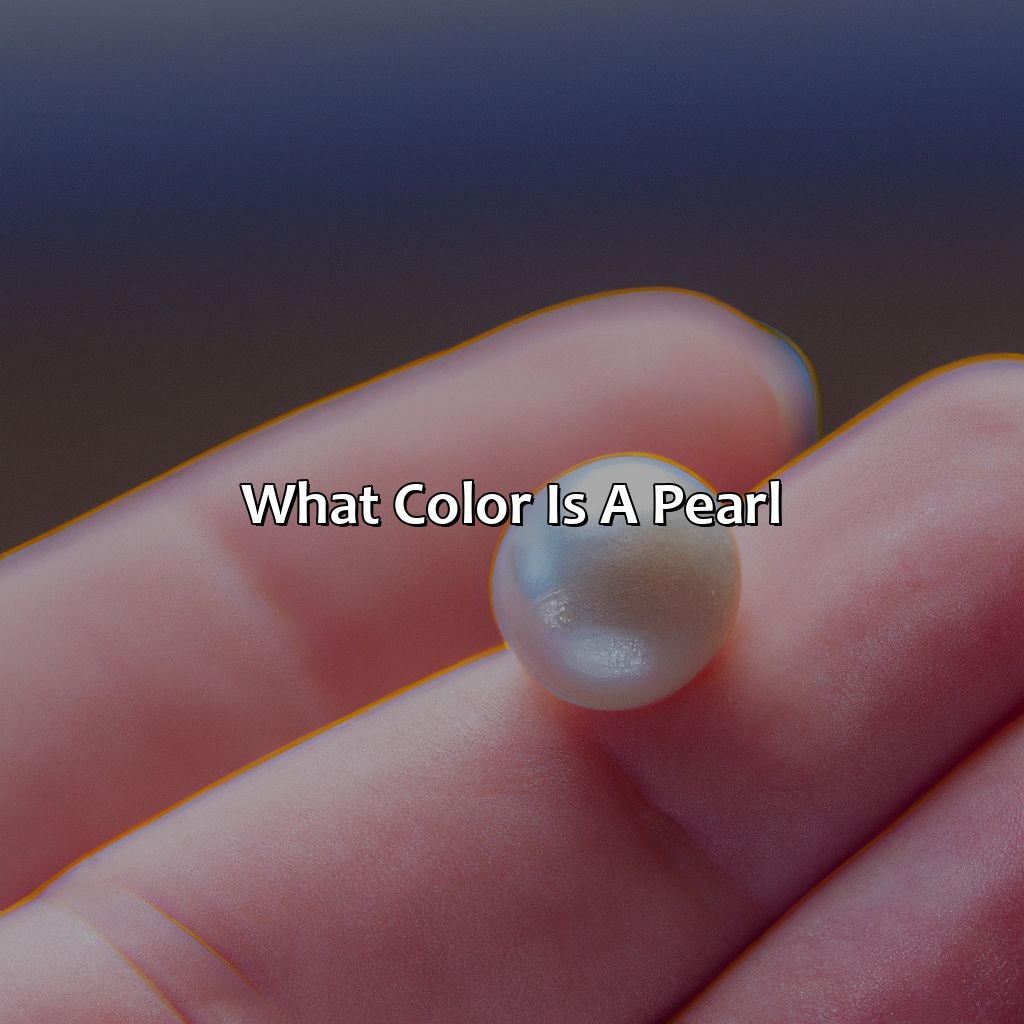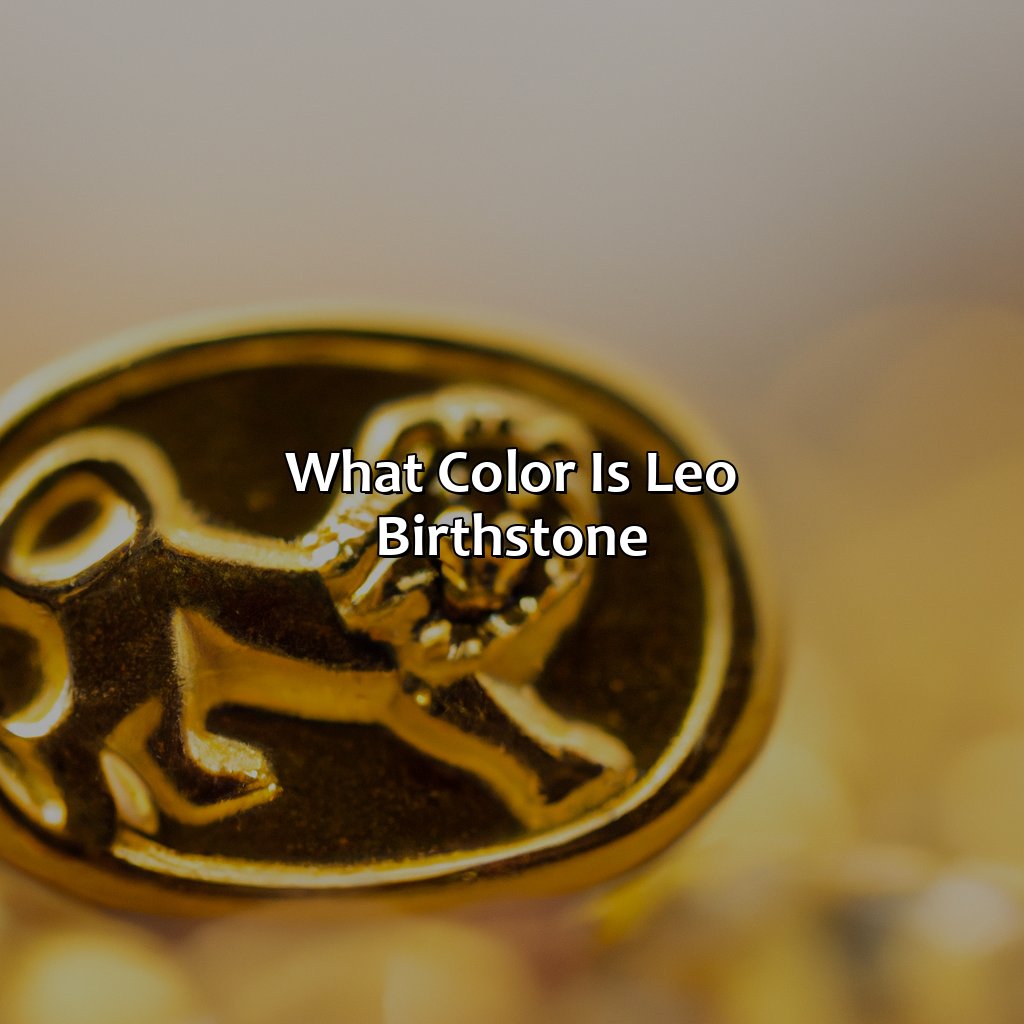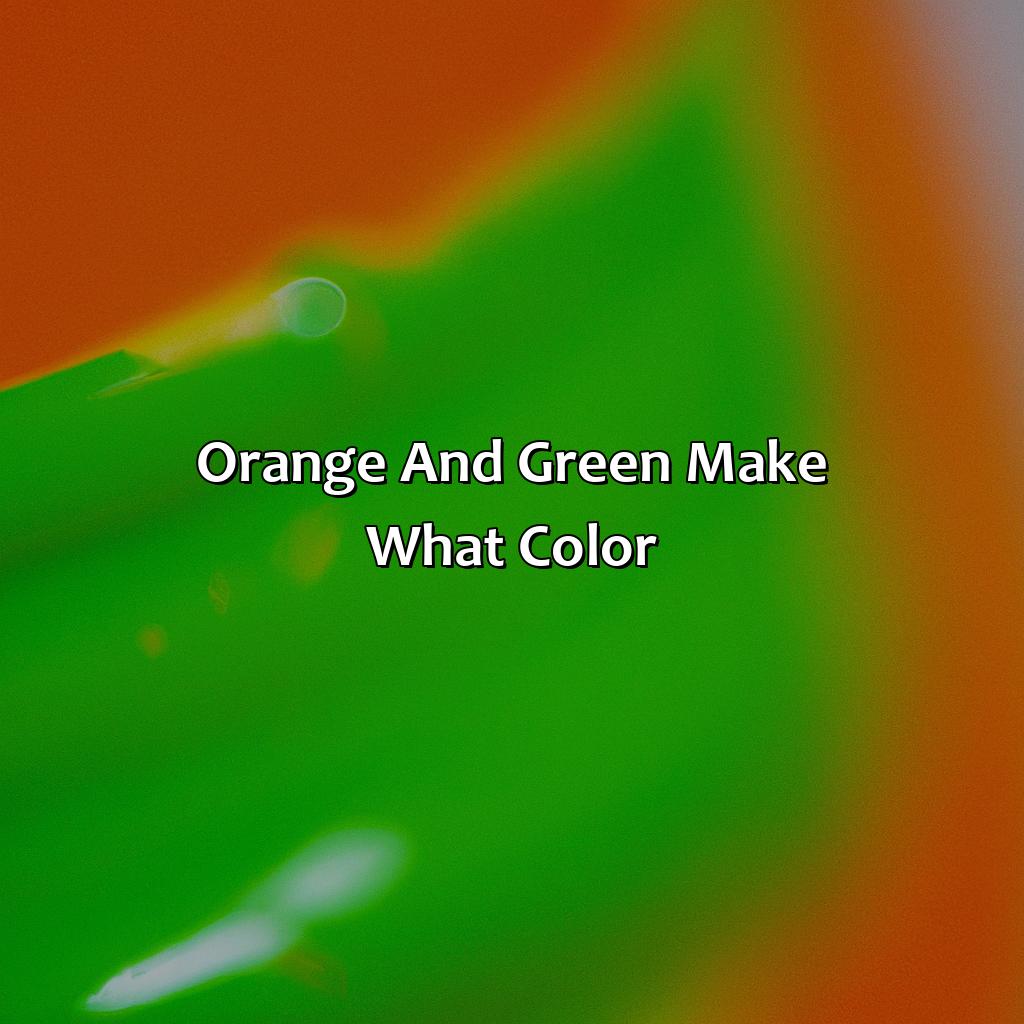Key Takeaway:
- The color of a pearl is determined by its composition and origin. Natural pearls come in a wide range of colors, from white and pink to black and gold, depending on the mollusk that produces them and the environment in which they grow.
- Pearl colors are classified based on the type of pearl, such as Akoya, freshwater, South Sea, and Tahitian pearls. Each type has its own range of colors and unique characteristics.
- Pearls can be treated to enhance their color, such as through natural color enhancement, irradiation treatment, or dyeing treatment. However, natural pearls are generally more valuable than treated pearls.
What Determines the Color of a Pearl?
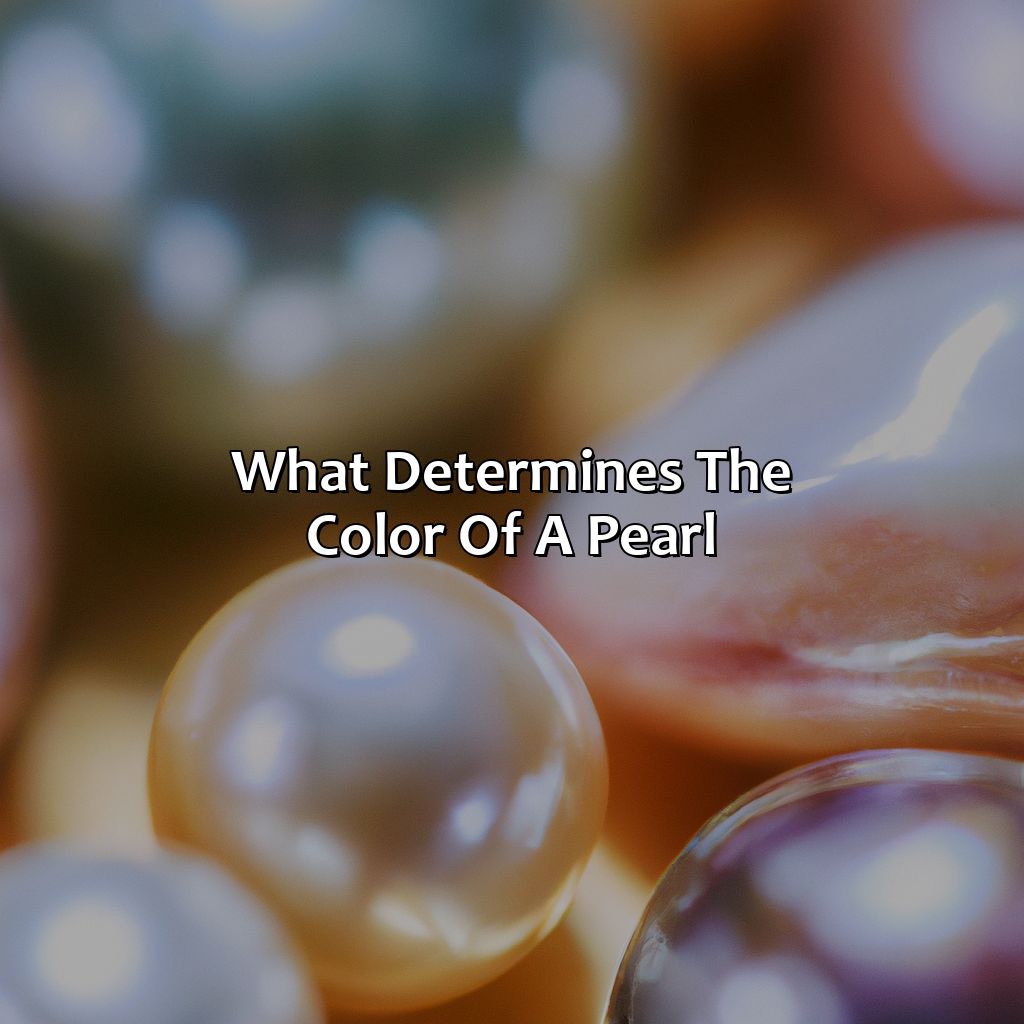
Photo Credits: colorscombo.com by William Miller
To comprehend how color is affected in a pearl, look into the sub-sections of Composition and Origin of Pearls, Color Terminology for Pearls, and Natural Color Variations in Pearls. These sub-sections will offer you an in-depth understanding of how pearls acquire their one of a kind shades dependent on their natural habitat and composition.
Composition and Origin of Pearls
Pearl Formation and Origin
A pearl’s composition and origin play a crucial role in determining its color. Here, we explore the inner workings of the gemstone’s natural process of creation and geographic distribution.
| Composition | Origin | |
|---|---|---|
| Akoya Pearls | Nacre | Japan |
| Freshwater Pearls | Nacre, Mantle tissue | China, Japan |
| South Sea Pearls | Thick Nacre | Philippines, Indonesia, Australia |
| Tahitian Pearls | Thin Nacre | French Polynesia |
The table above outlines four types of pearls with their distinctive features and locations in which they are harvested. While each type shares nacre as a significant component, their unique surroundings add to their unique attributes.
Natural pearls are rare, often exhibiting blemishes or irregular shapes. Cultured pearls grow in a controlled environment under specific conditions. They may differ slightly from natural ones based on rearing techniques.
Don’t miss out on understanding the complexities of pearl colors – read on to learn how to choose the perfect hue for your style and skin tone.
Pearl color lingo is like a foreign language, but don’t worry, we’ve got your back.
Color Terminology for Pearls
The language used to describe pearl colors is known as the “Color terminology for pearls.” It comprises various aspects, including hue, saturation, and tone. These terms aid in conveying a pearl’s color accurately and help buyers understand the differences between pearl varieties, sizes, and shapes.
| Term | Definition |
| Hue | The dominant color of a pearl that you can see. |
| Saturation | The intensity of color concentration. The degree of gray present in hues. |
| Tone | The depth or brightness of a pearl’s color shade that ranges from light to dark. |
Apart from these three terms, other factors such as overtones (secondary colors visible in some pearls) must be considered when describing a pearl’s color. Therefore, understanding this Color terminology for pearls is vital to make informed buying decisions.
Pearls display vast natural variations in their colors influenced mainly by the mollusk species, water condition, and geography where they are cultured. Essentially, nature dictates the Color terminology for pearls.
Historically speaking, color preference significantly impacted both fashion and jewelry design trends over varying periods. For instance, during the Renaissance era when black pearls were highly prized among European nobility or how large white South Sea Pearls became fashionable during the Art Deco era.
Pearls come in different colors, just like moods – from the elegant white to the daring black, they’ve got you covered.
Natural Color Variations in Pearls
The color of pearls varies due to different factors such as the type of oyster, water quality, and environmental conditions in which they grow. The natural color variations in pearls include white, cream, pink, peach, golden, silver, black, and greenish hues. These colors can also appear in a combination creating unique overtones like pinkish-white or blue-green. Natural color variations in pearls are characterized by their luster and iridescence. This makes each pearl one-of-a-kind and prized possession.
Akoya Pearls usually have white or cream colors with rose overtones while freshwater pearls may have pinkish-white, creamy-white and purple overtones. South Sea Pearls come in gold and silver hues while Tahitian Pearls range from black to gray with greenish-blue or purple overtones. Therefore, each pearl’s natural color variation depends on its origin.
It is interesting to note that the same variety of pearls grown in different locations might show distinct variations in color tones due to varying environmental conditions during the growth process. For instance, Akoya Pearls grown in Japan have an exceptional luster characterizing them as “Japanese akoya pearls” whereas Chinese Akoyas have a milky yellow tint.
To ensure that you do not miss out on any extraordinary Pearl purchase possibilities that could crop up anytime anywhere across different markets worldwide; keep an eye on the natural color variations available for purchase when presented to you. You never know what unique beauty of pearl you may find!
From Akoya to Tahitian, pearl colors are as diverse as a mood ring at a teenage sleepover.
How Do We Classify Pearl Colors?
Classifying pearl colors? Understand the four main types: Akoya, Freshwater, South Sea, and Tahitian. Each type has unique features which define its color. To differentiate Akoya, Freshwater, South Sea, and Tahitian pearl colors, consider the type of pearl and where it originated.
Akoya Pearls
Akoya pearls are highly popular and valued for their exceptional luster, round shape, and white to cream hues. Here is a breakdown of the distinct features of Akoya pearls.
| Feature | Description |
| Nacre Thickness | Average of 0.35mm – 0.7mm |
| Size Range | 6 mm – 9 mm (common); can range from 2mm-11mm. |
| Culturing Time | 8-24 months per pearl, depending on size. |
In addition to their quintessential traits, Akoya pearls offer an exceptional balance between quality and affordability that makes them the perfect gift choice for all occasions.
Embrace the precious elegance of Akoya pearls today and seize the opportunity to possess a treasure adored by every lady!
Freshwater pearls – because who needs an ocean when you can have a lake?
Freshwater Pearls
- Freshwater Pearls often come in shades of white, cream, pink, lavender, and peach.
- They have a dense nacre that gives them a long-lasting luster.
- Because they are grown in freshwater sources, they tend to have irregular shapes and sizes.
- Freshwater Pearls can be round or baroque-shaped with asymmetrical surfaces.
- They are versatile and can be worn casually or paired with formal attire.
- Freshwater Pearl earrings make a great gift for all occasions.
Unique details about Freshwater Pearls include their versatility in size and shape which makes them ideal for different jewelry designs such as necklaces, bracelets or rings. You can accentuate freshwater pearls with sterling silver or gold chains to create contemporary pieces.
A friend once shared her story about how her grandmother passed on to her a pair of perfect freshwater pearl earrings that had been handed down through generations. The sentimental value of these freshwater pearls made them more precious than any other piece of fine jewelry she owned.
South Sea Pearls: because size matters and these pearls pack a serious punch.
South Sea Pearls
The rare and valuable South Sea pearls are sourced from the warm waters of the South Pacific. These large, high-quality pearls are produced by the Pinctada Maxima oyster species, which is known for its ability to produce white and golden hues. They are typically larger than other types of pearls, with an average diameter of 10-13mm, and can grow up to 20mm in size. The remarkable composition of South Sea pearls gives them a lustrous, iridescent quality that shimmers in varying shades of light. These exquisite and luxurious pearls continue to be a coveted choice for fine jewelry pieces today.
As per their name suggests, the production region of South Sea Pearls is in the south part of sea/ocean/territory. These natural treasures with their pearly luster come in various tones like silver white, creamy gold or champagne-colored shades. Their unique inclination towards warmer tones makes them perfect for sunny day looks or casual evening attires. One can also buy Saltwater Pearl jewelry- stud/ears/knecklace made with premium-quality pearls that will make you stand out wherever you go.
Pro Tip: When looking to invest in South Sea pearl jewelry, opt for reputable retailers who source responsible and ethical production practices to ensure long-lasting beauty and sustainability. Why settle for a simple black pearl when you can have a Tahitian one that’s more bad pearl?
Tahitian Pearls
Tahitian Pearls reach sizes up to 18mm in diameter, making them larger than most other types of pearls. They are often called “black pearls,” although they actually come in a range of colors beyond black. Their color is determined by the mollusk’s ability to incorporate trace amounts of metal into the nacre layers that make up the pearl.
Tahitian Pearls have a thick nacre layer, making them durable and ideal for jewelry use. They are popular in high-end jewelry due to their rarity and beauty.
Tahitian Pearls are also known for their natural “peacock” sheen, which is caused by light bouncing off the overlapping layers of nacre. This effect gives Tahitian Pearls a depth and range not seen in other types of pearls.
In recent years, demand for Tahitian Pearls has led to some pearl farmers using nucleation techniques typically used with freshwater pearls. However, this practice has raised concerns about compromising the authenticity and natural quality of these prized gems.
Legend has it that ancient Polynesian goddesses populated the oceans with pearls, including Tahitian Pearls. Today, Tahitian Pearls continue to capture the fascination and admiration of people around the world. From natural color enhancement to dyeing and irradiation treatments, the pearl industry is all about enhancing mother nature’s mistakes.
Natural vs. Treated Pearls
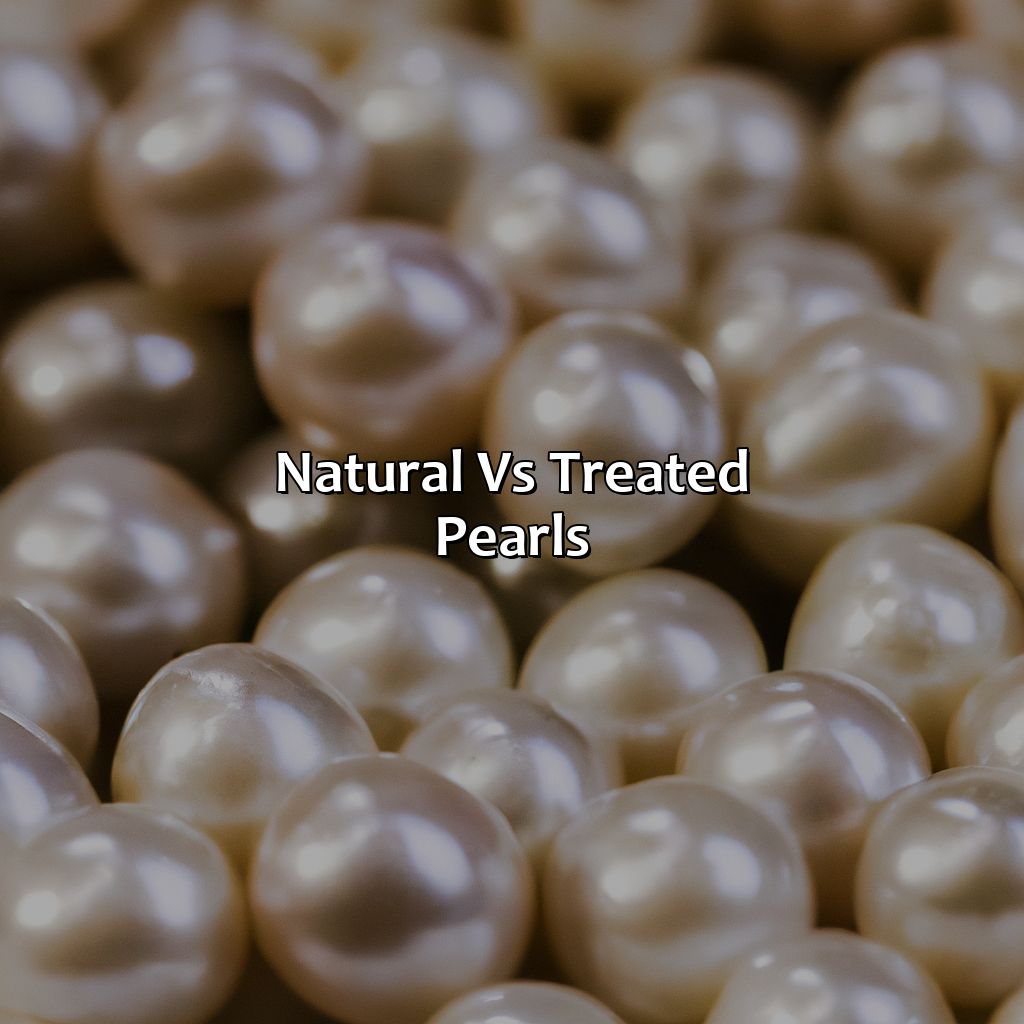
Photo Credits: colorscombo.com by Alan White
Learn the dissimilarities between natural and treated pearls and their colors. We’ll explore three sub-sections:
- Natural color enhancement
- Irradiation treatment
- Dyeing treatment
Each of these subsections has its own unique way of making pearls look beautiful. Discover more in this “What Color is a Pearl” article.
Natural Color Enhancement
Pearl colors can be enhanced naturally through techniques that do not involve any kind of dye or radiation. These techniques are known as natural color enhancement, and they are typically used on pearls with more subdued hues.
One method of natural color enhancement involves simply exposing the pearls to sunlight, which can intensify their color over time. Another technique is to use specialized lighting equipment that simulates the conditions of direct sunlight.
It should be noted that not all pearls will respond to natural color enhancement in the same way. Factors like the original color of the pearl, its luster, and even its surface imperfections can all affect how much a given pearl’s color can be enhanced naturally.
To maximize the effectiveness of natural color enhancement, it’s important to start with high-quality pearls that have a strong, well-defined hue to begin with. Additionally, proper storage and care of pearls can help prevent discoloration or fading over time, allowing their colors to shine through for years to come.
Irradiation treatment: turning boring pearls into radioactive superheroes.
Irradiation Treatment
During the irradiation treatment, electrons penetrate the surface of the pearl and interact with its atoms. This process creates color centers that can change the hue and saturation of the pearl’s existing color or add new colors entirely. Irradiation treatment can create stunning blue, green or black hues in a pearl that would not occur naturally.
It is important to note that irradiation treated pearls require disclosure before sale as they are technically considered enhanced pearls rather than natural ones.
Interestingly, uranium glass or vaseline glass was popular from 1840 to WWII for use in ornamental pieces/jewellery due to its glowing effect in daylight due to uranium oxidation induced UV radiation exposure; however, today it is highly restricted due to impacts on health & safety from gamma radiation induction isotope contamination.
Who knew dyeing pearls was just like dyeing Easter eggs, but with a more sophisticated outcome?
Dyeing Treatment
Pearls can be artificially dyed to enhance their color and improve their marketability, through a dyeing treatment. During this process, the pearls are immersed in a solution that contains a specific pigment or dye, which permeates into the layers of nacre to change the pearl color. The dyeing treatment can occur after harvesting or when growing the pearl; while it is generally regarded as acceptable in the industry, natural-colored pearls command higher prices.
When undergoing a dyeing treatment, pearls are first cleaned and polished before being submerged in a dye solution. The amount of time the pearls remain submerged determines how deep and even the color stays. Naturally darker colored pearls take fewer hours to achieve optimal coloring than lighter colored ones. Pearls vary on how receptive they are to artificial dyes – some may only accept certain colors.
It should be noted that reputable pearl dealers fully disclose if any of their pearl products have undergone any type of dyeing treatment and do not attempt to pass them off as natural colors. While the use of artificial dyes has been widespread throughout history, some people view it negatively because it diminishes the natural aspect of these beautiful objects.
Finding the right pearl color is like finding the perfect lipstick – it all depends on your skin tone, occasion, attire, personal preference, and style.
Choosing the Right Pearl Color

Photo Credits: colorscombo.com by Jeremy Jones
What color pearl to choose? Skin tone and its undertones, the event and what you’re wearing, plus personal preference and style – all of these have a big say. Three factors which will help you decide which pearl to pick!
Skin Tone and Undertones
The color of a pearl depends on various factors, including its composition and origin. However, skin tone and undertones play a crucial role in determining the perfect pearl color to match one’s complexion. Individuals with warm undertones should opt for pearls with golden or peach tones, such as the Akoya and South Sea pearls. In contrast, people with cool undertones should choose pearls with pink and blue hues, such as Tahitian and freshwater pearls. It is essential to consider these factors when choosing a pearl color to ensure that it enhances one’s natural beauty.
Unique detailing in this context involves understanding how to determine your skin undertone. A quick way could be checking your wrist veins’ appearance; if they show blue or purple, you have cool undertones. If they appear greenish or yellowish, you have warm tones.
History details reveal that Pearl colors are not random but heavily influenced by the pearl industry’s market demands over time. Originally, white or cream-colored pearls were popular choices due to their rarity. But later patronage for black-peacock shade Tahitian pearls gained momentum and became highly sought-after varieties among Western markets from the 1970s onward.
Choosing the right pearl color for your attire is like adding the perfect sprinkle of seasoning to your dish.
Occasion and Attire
When selecting a pearl, considering the occasion and attire is crucial to appreciate and highlight its beauty.
- Formal events, such as weddings and galas, require classic and elegant jewelry. Opt for white or cream-colored pearls to match your gown.
- Cocktail parties demand sophistication with a touch of fun. Try pearls in pastel colors or opt for pieces with colorful gems to make a statement.
- For an everyday look, choose natural shades that suit your skin tones or mix and match different colored pearls for an eclectic style.
- Beach events warrant lighter hues like pink and lavender, which complement sunny weather beautifully.
Considering the occasion and attire shows good taste, showcase your sense of style and personality while respecting etiquette.
It is always better to keep it simple than going over-decorative if you’re unsure about what works well. Always remember that pearls remain timeless jewels suitable for any age group.
A friend of mine wore gold drop earrings embellished with white pearls on her wedding day. Her ‘something blue’ was pearl-embellished pumps with sky-blue soles accentuating her beachside ceremony dress’ pastel shades. The result? A sophisticated yet elegant look worth remembering!
Choosing the perfect pearl color is like finding the perfect outfit for a first date- it’s all about personal preference and style.
Personal Preference and Style
Choosing the right pearl color depends heavily on personal preference and style. Everyone has unique tastes, and it’s essential to choose a color that resonates with your sense of fashion. While some people prefer classic white or cream colored pearls for their versatility, others might opt for bold or pastel hues like pink, lavender, or gold for an extra pop of personality in their jewelry collection.
When considering personal preference and style, it’s important to think about the types of clothing you typically wear and the occasions you plan on attending with your pearls. If you regularly wear formal attire, darker colored pearls like black Tahitian or South Sea pearls might be more appropriate. For more casual events or everyday wear, freshwater pearls in soft colors like peach or lavender could be a great match.
In addition to occasion and attire considerations, skin tone can play a significant role in choosing the right pearl color. People with warm undertones tend to look best in pearls with yellow overtones like cream and gold hues while those with cooler undertones tend to shine in pink or silver toned pearls.
Given that personal preferences can vary wildly from person to person; there’s no clear-cut way of determining which color of pearl is ideal for each individual apart from getting exposed to as many as possible and gravitating towards what one finds aesthetically pleasing.
Five Facts About the Color of Pearls:
- ✅ Pearls come in a variety of colors, including white, black, silver, cream, pink, and gold. (Source: American Gem Society)
- ✅ A pearl’s color is determined by the type of mollusk that produces it, as well as the water and environmental conditions it grows in. (Source: The Spruce)
- ✅ Cultured pearls, which make up the majority of pearls sold today, are often dyed or bleached to enhance their color. (Source: Jewelry Shopping Guide)
- ✅ Natural pearls are much rarer than cultured pearls and can come in a wider range of colors, including shades of blue, green, and purple. (Source: National Geographic)
- ✅ The most valuable pearl color is generally considered to be a rich, deep, and even gold-toned white. (Source: The Pearl Source)
FAQs about What Color Is A Pearl
What color is a pearl?
Answer: Pearls come in a wide range of colors, including white, cream, pink, red, blue, green, purple, black, and yellow.
Do all pearls have the same color?
Answer: No, the color of a pearl depends on several factors, such as the type of mollusk that produced it, the water temperature, and the presence of minerals in the water.
What gives pearls their color?
Answer: The color of a pearl is determined by the nacre, a substance secreted by the mollusk to coat the irritant that led to the formation of the pearl. The thickness and quality of the nacre determine the intensity and hue of the color.
Are black pearls really black?
Answer: Black pearls are not actually black, but rather they have a dark green, blue, or purple tint. The term “black” refers to their overall dark coloration.
What is the rarest color for a pearl?
Answer: The rarest color for a pearl is natural pink, which is produced by some species of freshwater mussels. Pink pearls are highly valued for their rarity and beauty.
Can pearls change color over time?
Answer: Yes, pearls can change color over time due to environmental factors such as exposure to light, heat, and chemicals. This can cause them to become dull, fade, or even lose their color entirely.
